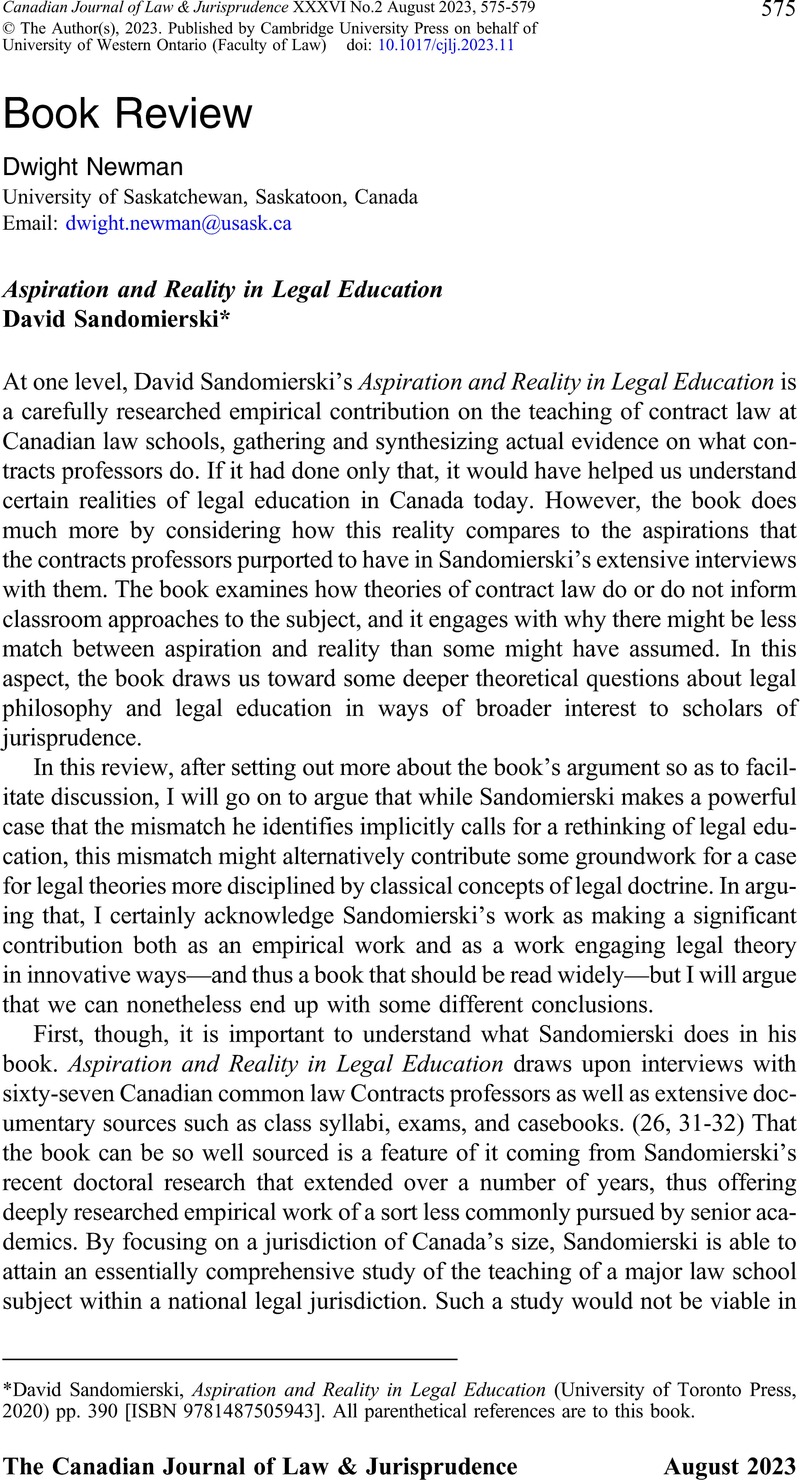No CrossRef data available.
Published online by Cambridge University Press: 25 August 2023

David Sandomierski, Aspiration and Reality in Legal Education (University of Toronto Press, 2020) pp. 390 [ISBN 9781487505943]. All parenthetical references are to this book.
1 See Felipe Jiménez, “Legal Positivism for Legal Officials” (2023) 36:2 Can JL & Jur, DOI: 10.1017/cjlj.2022.36.